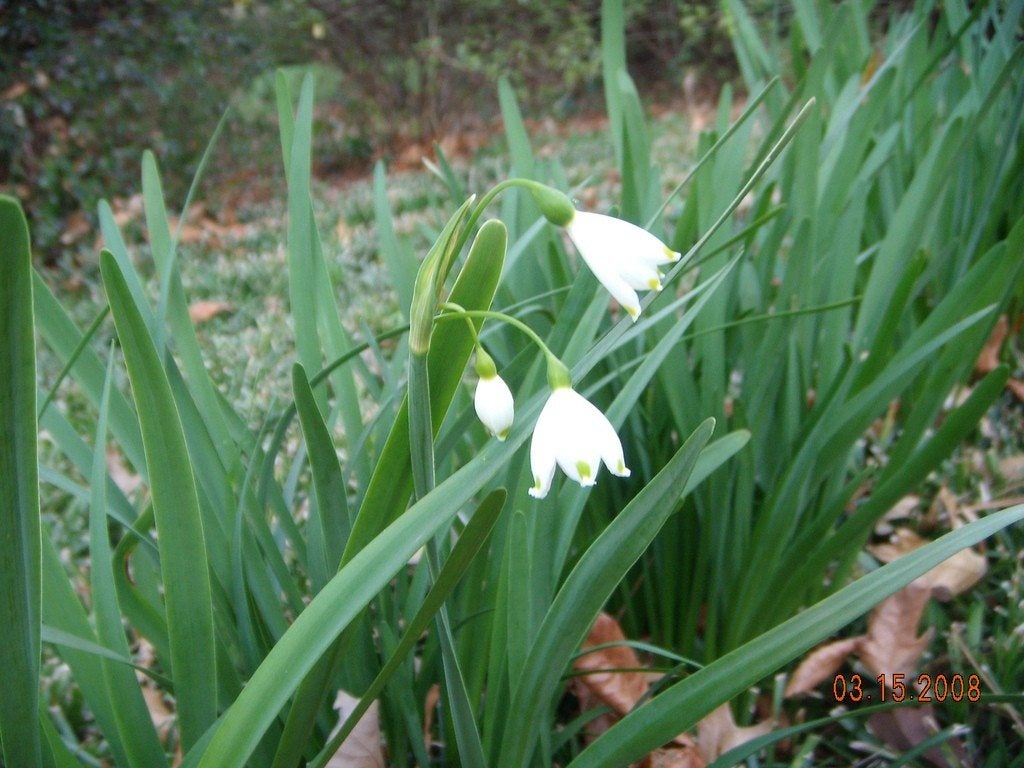Growing Snowflake Leucojum: Learn About Spring & Summer Snowflake Bulbs


Growing snowflake Leucojum bulbs in the garden is an easy and fulfilling endeavor. Let's learn more about how to grow snowflake bulbs.
Spring & Summer Snowflake Bulbs
Despite the name, summer snowflake bulbs (Leucojum aestivum) bloom in mid to late spring in most areas, just a couple of weeks after the spring snowflakes (Leucojum vernum). Both bulbs have grass-like foliage and dainty, fragrant drooping bells. They look almost exactly like snowdrops (Galanthus nivalis), which bloom a couple of weeks before spring snowflakes. You can tell the difference between the two flowers by the fact that snowflakes have a green dot at the tip of each of its six petals, while snowdrops have dots on only three of its petals. Nothing could be easier than snowflake plant care. Summer snowflakes are the larger of the two plants, growing 1 1/2 to 3 feet (45.7 to 91 cm.) tall. The foliage of spring snowflake bulbs grows about 10 inches (25 cm.) tall and the flowers bloom on 12-inch (30.48 cm.) stalks. Unlike some spring bulbs, the snowflake's foliage lasts a long time after the flowers fade. Growing snowflake Leucojum at the back of a low-growing perennial border creates an interesting backdrop for late spring and early summer-blooming flowers.
How to Grow Snowflake Bulbs
Snowflakes are hardy in USDA plant hardiness zones 3 through 9. Choose a location with full sun or partial shade and well-drained soil. If your soil isn't rich in organic matter, work plenty of compost or composted manure into the bed before planting. Sprinkle a small amount of bulb fertilizer over the compost before digging it deep into the soil. Plant the bulbs in fall under 3 to 4 inches (7.16 to 10 cm.) of soil and 6 to 10 inches (15 to 25 cm.) apart.
Snowflake Plant Care
When spring arrives, the plant's only demand is moist soil. Water the plants deeply and thoroughly when rainfall is less than 2 inches per week. Keep up the watering schedule as long as the plant is growing. Snails and slugs love to dine on snowflakes. If you see their slime trails in the area, it's a good idea to set out traps and baits in spring. Some bait is harmless to children, pets and wildlife while others are quite toxic. Read the label carefully before making your choice. You can leave summer and spring snowflake bulbs in the ground in the same location for many years unless you want to divide them for propagation purposes. The plants don't require regular division. They spread to fill the space between the plants, but never become invasive.
Gardening tips, videos, info and more delivered right to your inbox!
Sign up for the Gardening Know How newsletter today and receive a free copy of our e-book "How to Grow Delicious Tomatoes".

Jackie Carroll has written over 500 articles for Gardening Know How on a wide range of topics.
-
 What Is A Pollinator Garden? Grow Gorgeous Blooms While Benefiting Your Local Ecosystem
What Is A Pollinator Garden? Grow Gorgeous Blooms While Benefiting Your Local EcosystemPollinator gardens look great and also provide a diverse ecosystem that benefits your local pollinating insects and animals. Get started today with this guide!
By Bonnie L. Grant
-
 5 Tough Urban Trees That Thrive In Cities – Top Picks For Urban & Suburban Landscapes
5 Tough Urban Trees That Thrive In Cities – Top Picks For Urban & Suburban LandscapesExplore the best urban trees that will add value to even the most challenging of landscapes. Get growing with these ideas and enjoy all the benefits of trees.
By Teo Spengler